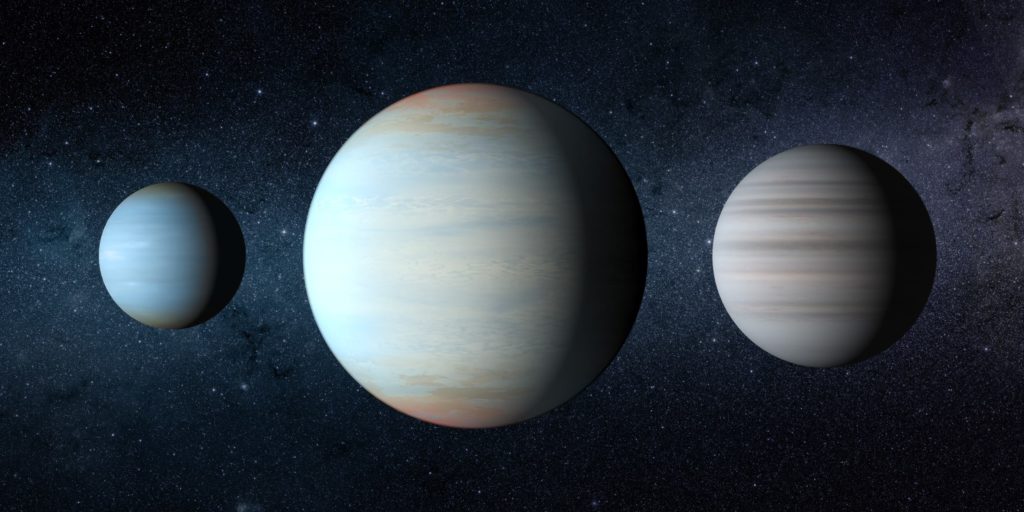Astronomers have discovered a third planet in the Kepler-47 system, securing the system’s title as the most interesting of the binary-star worlds. Using data from NASA’s Kepler space telescope, a team of researchers, led by astronomers at San Diego State University, detected the new Neptune-to-Saturn-size planet orbiting between two previously known planets.

With its three planets orbiting two suns, Kepler-47 is the only known multi-planet circumbinary system. Circumbinary planets are those that orbit two stars.
With its two known planets, the Kepler-47 system proves that complete planetary systems can indeed exist around binary stars. Launched in 2009, NASA's Kepler mission measures the light output of 150,000 stars simultaneously. The data from each star are then analyzed in. Kepler-47 Windows Server Storage Spaces Direct Two-Node HCI Solution We are excited to introduce the Kepler-47 appliance, a budget-friendly Storage Spaces Direct two-node solution for customers with small and ROBO deployments. We are proud to work with Microsoft, Intel,. The audio, illustrations, photos, and videos are credited beneath the media asset, except for promotional images, which generally link to another page that contains the media credit.
The planets in the Kepler-47 system were detected via the “transit method.” If the orbital plane of the planet is aligned edge-on as seen from Earth, the planet can pass in front of the host stars, leading to a measurable decrease in the observed brightness. The new planet, dubbed Kepler-47d, was not detected earlier due to weak transit signals.
As is common with circumbinary planets, the alignment of the orbital planes of the planets change with time. In this case, the middle planet’s orbit has become more aligned, leading to a stronger transit signal. The transit depth went from undetectable at the beginning of the Kepler Mission to the deepest of the three planets over the span of just four years.
The SDSU researchers were surprised by both the size and location of the new planet. Kepler-47d is the largest of the three planets in the Kepler-47 system.


“We saw a hint of a third planet back in 2012, but with only one transit we needed more data to be sure,” said SDSU astronomer Jerome Orosz, the paper’s lead author. “With an additional transit, the planet’s orbital period could be determined, and we were then able to uncover more transits that were hidden in the noise in the earlier data.”
William Welsh, SDSU astronomer and the study’s co-author, said he and Orosz expected any additional planets in the Kepler-47 system to be orbiting exterior to the previously known planets. “We certainly didn’t expect it to be the largest planet in the system. This was almost shocking,” said Welsh. Their research was recently published in the Astronomical Journal.
With the discovery of the new planet, a much better understanding of the system is possible. For example, researchers now know the planets in in this circumbinary system are very low density – less than that of Saturn, the Solar System planet with the lowest density.
While a low density is not that unusual for the sizzling hot-Jupiter type exoplanets, it is rare for mild-temperature planets. Kepler-47d’s equilibrium temperature is roughly 50 degreesF (10 degrees C), while Kepler-47c is ‑26 degrees F (‑32 degrees C). The innermost planet, which is the smallest circumbinary planet known, is a much hotter 336 degrees F (169 degrees C).
The inner, middle, and outer planets are 3.1, 7 and 4.7 times the size of the Earth, and take 49, 187 and 303 days, respectively, to orbit around their suns. The stars themselves orbit each other in only 7.45 days; one star is similar to the Sun, while the other has a third of the mass of the Sun. The entire system is compact and would fit inside the orbit of the Earth. It is approximately 3340 light-years away in the direction of the constellation Cygnus.
'This work builds on one of the Kepler’s most interesting discoveries: that systems of closely-packed, low-density planets are extremely common in our galaxy,” said University of California, Santa Cruz astronomer Jonathan Fortney, who was not part of the study. “Kepler‑47 shows that whatever process forms these planets – an outcome that did not happen in our solar system – is common to single-star and circumbinary planetary systems.'
This work was supported in part by grants from NASA and the National Science Foundation.
Kepler-47: A Transiting Circumbinary Multiplanet System
Abstract
We report the detection of Kepler-47, a system consisting of two planets orbiting around an eclipsing pair of stars. The inner and outer planets have radii 3.0 and 4.6 times that of Earth, respectively. The binary star consists of a Sun-like star and a companion roughly one-third its size, orbiting each other every 7.45 days. With an orbital period of 49.5 days, 18 transits of the inner planet have been observed, allowing a detailed characterization of its orbit and those of the stars. The outer planet’s orbital period is 303.2 days, and although the planet is not Earth-like, it resides within the classical “habitable zone,” where liquid water could exist on an Earth-like planet. With its two known planets, Kepler-47 establishes that close binary stars can host complete planetary systems.


Kepler 470
- ASTRONOMY;
- Astrophysics - Solar and Stellar Astrophysics;
- Astrophysics - Earth and Planetary Astrophysics
Nasa Kepler New Planet
Kepler-47 Third Planet
